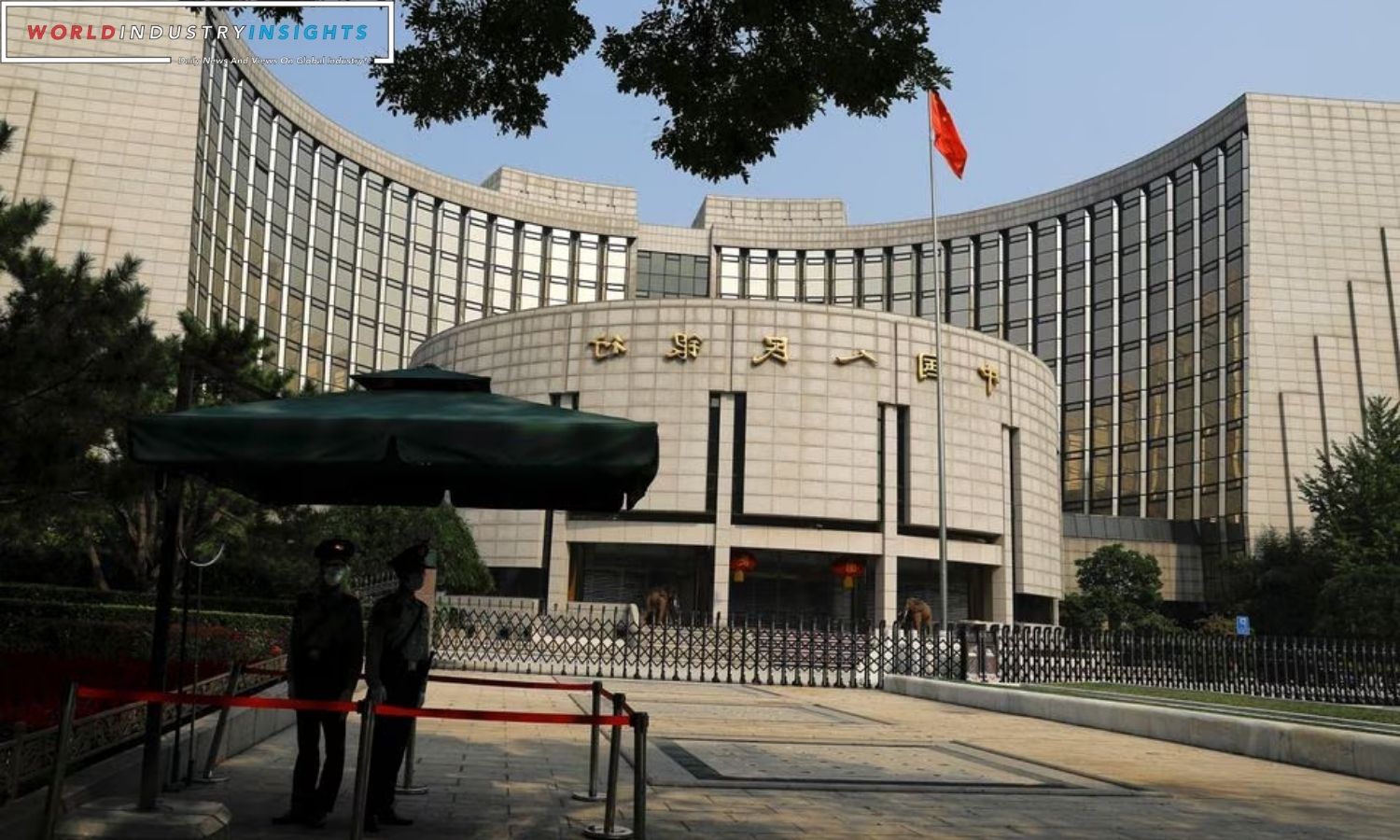Central Bank of China Boosts liquidity: China’s central bank made a smart strategic move on Monday by renewing medium-term policy loans. This raised support for the banking system. As expected, the People’s Bank of China (PBOC) made an intelligent choice by keeping the interest rate the same. They did this to find the best mix between giving the economy enough cash and keeping the yuan stable simultaneously. At the same time, more people are expecting U.S. rates to stay high for a while longer.
In a move that was seen as smart, the PBOC described how it had set up the medium-term lending facility (MLF) operations in a public statement. The MLF operations added 789 billion yuan ($107.96 billion) to the banking system to improve liquidity.
The policy loan rate for one year, which stayed at 2.50%, went in the same way as the numbers from the last operation. It was a big deal because the 500 billion yuan in maturing MLF loans meant that the People’s Bank of China had to put a set amount of new money into the banking system to get it going again.
As a result of a study done by channels the week before, most people in the market thought that the MLF rate would stay the same. According to Stone Zhou, Director of Global Markets at UOB China, the real goal is for the PBOC to try to ease market stress through this monetary arrangement.
Also Read: China Real Estate Turmoil Puts Too-Big-to-Fail Banks to the Ultimate Test
Beijing is taking action to deal with growing debt issues, which can be seen in the busyness of the Chinese local government right now. For example, Liaoning and Chongqing rush to issue special refinancing bonds to meet their obligations. Analysts are getting ready for a big issue because they think these bonds will reach at least 1 trillion yuan by the end of the year.
As tax collections for the government loom in October, people may have trouble paying their bills. This adds another level of complexity to the economic ballet. The People’s Bank of China has already used the knife twice this year to carefully lower the MLF rate to fix the economy, which is struggling because people aren’t spending as much, and the real estate crisis is worsening. This move, similar to China changing its benchmark loan rates, is meant to lower the cost of borrowing money.
But there is a problem. Suppose China’s economy is having a hard time. More monetary easing might help in that case, but it could also make the yield difference with the U.S. bigger. The yuan would face new downward pressure in this situation. It has already lost almost 5.5% of its value against the stable dollar this fiscal year. If the PBOC makes a strategic move on Monday, Xing Zhaopeng, Senior China Strategist at ANZ, says that a five basis point drop in the average rate for 1-year loans on Friday is still possible.
Most people agree that the PBOC will keep up its strategy of “measured easing,” which involves taking one important step back every month. This is meant to balance out China’s economy’s discordant notes, creating a complex dance between economic needs and smart money management.
Our Reader’s Queries
Did China’s central bank set to boost liquidity but keep policy rate steady?
According to a recent Reuters survey, China’s central bank is set to increase liquidity injections while maintaining the current key interest rate. This move is expected to occur when the bank rolls over maturing medium-term policy loans on Friday. The injection of liquidity is aimed at boosting the economy, while keeping the interest rate unchanged will help maintain stability.
How do central banks increase liquidity?
The primary way a central bank offers liquidity is through its monetary policy operations. In the case of the ECB, this includes refinancing operations and asset purchases.
What happens when the central bank increases the bank rate?
When the central bank decides to raise interest rates, it aims to put the brakes on the economy. This is achieved by making borrowing more expensive, as loans now come with higher interest rates. Consequently, the cost of purchasing goods and services on credit also increases. The ultimate goal is to curb spending and prevent inflation from spiraling out of control.
What do banks do with excess liquidity?
Banks can hold onto extra cash for two reasons: as a precautionary measure or for non-precautionary reasons. Precautionary motives involve keeping extra liquidity on hand to protect against unexpected deposit shocks, especially when the inter-bank market is not working efficiently.


